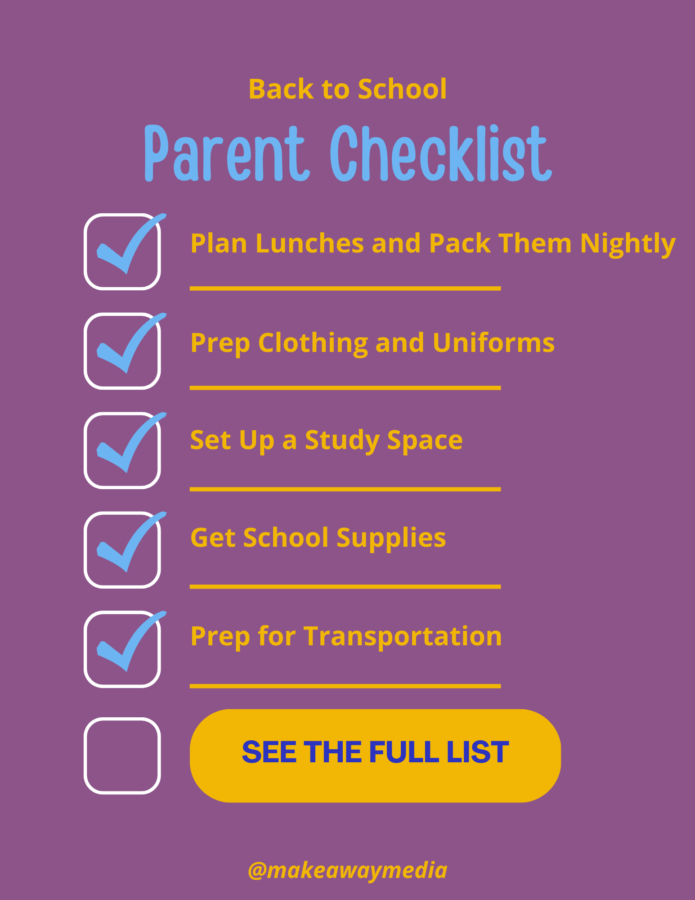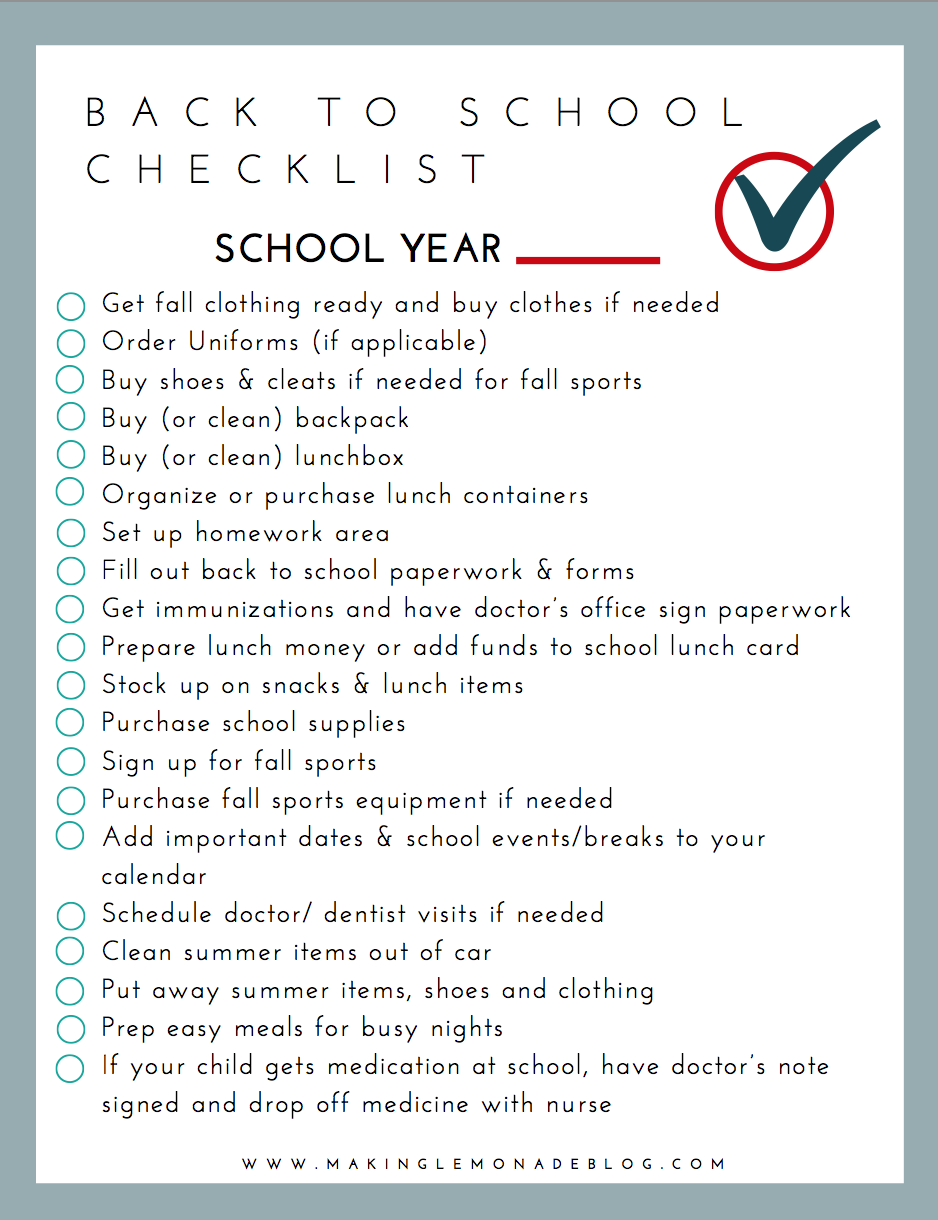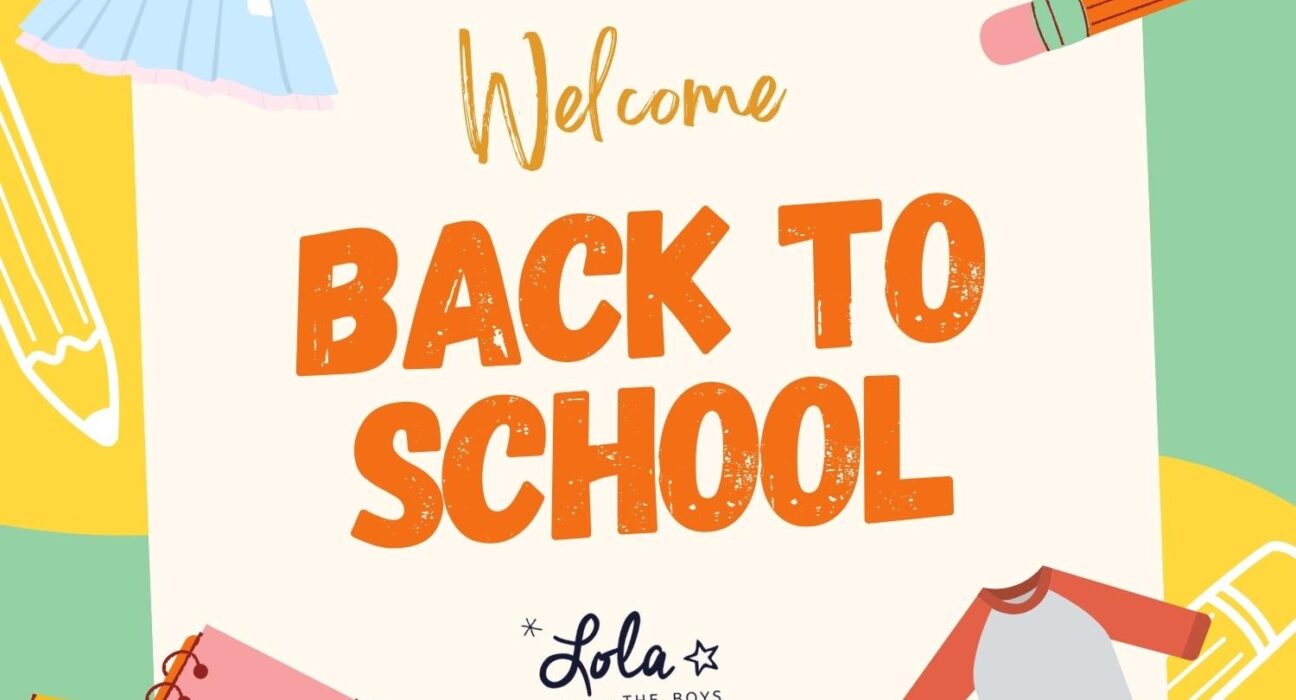As summer ends, it’s time to think about back-to-school preparations. Parents face the annual challenge of gathering clothing and supplies for their kids.
Getting ready for a new school year can feel overwhelming. You want to ensure your children have everything they need to succeed. From backpacks to notebooks, every item plays a role in their journey. Clothing is just as important. Kids need comfortable outfits that reflect their style and make them feel good.
This blog will guide you through essential clothing and supplies. You’ll discover what to prioritize and how to make the process easier. Prepare your kids for a fantastic school year ahead!
Seasonal Shopping Spree: Back To School Edition
Back to school shopping is exciting for kids and parents. It’s time to refresh wardrobes and gather supplies. This shopping spree sets the tone for the school year. You want your kids to feel confident and prepared.
Why Timing Matters
Timing can make a big difference in your shopping experience. Shopping early can save money and reduce stress. Stores often run out of popular items quickly. Here are some tips:
- Start shopping in late July or early August.
- Keep an eye on school supply lists.
- Shop during the tax-free weekends if available.
Waiting until the last minute can lead to higher prices. You may miss out on sales and discounts. Planning ahead helps you find the best deals.
Best Sales And Deals
Finding the best sales is key to saving money. Many stores offer discounts during back-to-school season. Here’s a quick list of stores to check:
| Store | Deals |
|---|---|
| Target | Up to 30% off clothing and supplies |
| Walmart | Rollback prices on selected items |
| Old Navy | 50% off kids’ clothing |
| Amazon | Exclusive online discounts |
Sign up for store newsletters. Get alerts on special sales and promotions. Use coupons whenever possible. Combine sales with coupons for extra savings.
Plan your shopping list wisely. Include clothes, shoes, and supplies. Check what your kids need before going to the store. This way, you avoid impulse buys and stick to your budget.
Essential Clothing Checklist
Back to school means new clothes for kids. An essential clothing checklist helps you prepare. It covers everything from uniforms to casual wear. Getting these items ready saves time and stress.
Let’s break down what your kids need. This checklist makes shopping easier. It ensures your kids have what they need for school.
Uniform Essentials
Uniforms are often required in schools. Check the school’s dress code first. Here are the basics:
- Two to three polo shirts or button-up shirts.
- Two pairs of dress pants or skirts.
- One or two sweaters or cardigans.
- Comfortable shoes, preferably black or brown.
- Socks in neutral colors.
- Optional: A blazer or vest for colder months.
Make sure the uniforms fit well. Kids grow fast, so consider sizes carefully. Buying a little larger can be helpful.
Casual Wear Must-haves
Casual wear is important for after school. Kids need comfortable clothes for play. Here are some must-haves:
- Three to four t-shirts or long-sleeve shirts.
- Two pairs of jeans or casual pants.
- One or two hoodies or sweatshirts.
- Comfortable sneakers or athletic shoes.
- Seasonal items like shorts or jackets.
Choose clothes that mix and match easily. This gives kids more outfit options. Comfort is key for active days.
The Right Fit: Sizing Tips For Growing Kids
Finding the right fit for kids is important. They grow fast. Clothes that fit well help them feel comfortable and confident. Here are some tips to help you measure and choose the right sizes for your children.
Measuring For Accurate Sizes
Start by measuring your child’s height and weight. Use a measuring tape. Record these numbers for future reference. Measure their chest, waist, and hips too. These measurements help you find the right size.
Check the size charts of different brands. Sizes can vary between brands. Compare your child’s measurements to the charts. This will help you select the best size.
Don’t forget about shoe sizes. Measure both feet. Feet can be different sizes. Always choose shoes that offer a little extra room for comfort.
Anticipating Growth Spurts
Kiddos often have growth spurts. This means they may need bigger sizes soon. To prepare, buy clothes that are slightly larger. Look for adjustable waistbands and stretchy fabrics.
Consider buying versatile pieces. These can last longer through different sizes. Layering clothes also helps. A larger shirt can fit over a smaller one.
Keep an eye on your child’s growth. Regularly measure their size to stay updated. This helps you avoid last-minute shopping trips.
Comfort Meets Style: Balancing Kid Preferences
Finding the right balance between comfort and style is key for kids. They want to feel good in what they wear. At the same time, they want to look cool. Parents can make choices that satisfy both. Here’s how to do it.
Incorporating Trends
Kids love to follow trends. Popular colors and patterns can make outfits exciting. Think about styles that are in right now. Look for graphic tees, joggers, and fun sneakers. These items are trendy and can fit into many wardrobes.
Mix and match clothes for fun outfits. Layering is also a great choice. A stylish hoodie over a shirt can look great. Accessories like hats and backpacks add flair. Let kids choose items that reflect their personality.
Prioritizing Comfort
Comfort is essential for kids. Soft fabrics and stretchy materials work best. Look for clothes that allow movement. Avoid stiff or scratchy materials. Kids will be happier in comfy outfits.
Consider adjustable waistbands for pants. This ensures a better fit. Look for shoes that provide support. Breathable materials keep feet cool. Comfort should never be sacrificed for style.
Budgeting For A New School Year
Preparing for a new school year means planning your budget. School supplies can add up quickly. It is important to spend wisely. This helps your kids get what they need without overspending. A clear budget can make shopping easier and less stressful.
Allocating Funds Wisely
Start by listing all the items your kids need. Think about clothing, shoes, and school supplies. Set a maximum amount for each category. This keeps your spending in check.
Look for sales and discounts. Plan shopping trips during back-to-school sales. This can save you money. Consider buying used items or swapping with friends.
Tracking Expenses
Keep track of what you spend. Write down every purchase. Use a notebook or a simple app. This will help you stick to your budget.
Review your spending regularly. Adjust your budget if needed. This will ensure you stay on track. It also helps to see where you can save more.
Navigating Online Vs. In-store Shopping
Back-to-school shopping can be stressful. You want the best for your kids. Choosing between online and in-store shopping is important. Each option has its own benefits and drawbacks. Understanding these can help you make the right choice.
Pros And Cons
Online shopping offers many advantages. You can shop anytime. It saves time and energy. You can compare prices easily. Many online stores have special deals.
However, there are downsides. You cannot see or touch the items. Sizes may vary across brands. Shipping costs can add up. Returns can be a hassle.
In-store shopping has its perks too. You can try on clothing. This ensures the right fit. You can see the quality of items. Shopping in-store can be fun for kids.
Still, there are some cons. It takes more time. You may face crowds and long lines. Some stores may not have everything in stock.
Maximizing Savings
Finding the best deals is crucial. Online stores often offer discounts. Look for coupon codes before you buy. Sign up for newsletters to get alerts on sales.
In-store shopping can also save you money. Check local flyers for promotions. Take advantage of price matching policies. Shopping during sales events can lead to great savings.
Consider combining both methods. Shop online for specific items. Visit stores for clothing that needs to be tried on. This way, you can enjoy the benefits of both.
Layering Essentials For Changing Seasons
As the seasons change, kids need clothes that adapt. Layering is key for comfort. It helps manage temperature swings. The right pieces make it easy for kids to stay warm or cool. Here are some essentials for layering your child’s wardrobe.
Transition Pieces
Transition pieces are versatile and functional. They fit well in different weather. A lightweight long-sleeve shirt is great. It can be worn alone or under a sweater. Look for styles that are easy to take off or put on.
A denim jacket is another must-have. It works well for both warm and cool days. A thin hoodie is perfect for layering too. Your child can wear it under a coat or over a t-shirt.
Investing In Quality Outerwear
Quality outerwear is important for changing weather. A good coat keeps your child warm and dry. Look for waterproof options for rainy days. Insulated jackets can also help in colder months.
Don’t forget about accessories. A warm hat and gloves can make a big difference. Choose items that are easy for kids to wear. This will encourage them to dress appropriately.
Investing in quality pieces saves money in the long run. They last longer and perform better. Your kids will be ready for any season with the right layers.

Credit: makeawaymedia.com
Accessorize And Personalize
Getting ready for school is exciting. Kids want to express themselves. Accessories help them stand out. Personal touches make school gear special. Let’s explore how to accessorize and personalize for the new school year.
Backpacks And Lunch Gear
Backpacks are essential for school. They carry books, supplies, and more. Choosing the right backpack is important. Look for comfort and durability. Bright colors and fun designs appeal to kids.
Lunch gear is just as important. Lunch boxes keep food fresh and tasty. A matching water bottle adds style. Kids will love bringing their favorite characters to school.
Adding Personal Touches
Personalizing school gear makes it unique. Stickers are a fun way to customize. Kids can choose stickers that show their interests. Name tags help keep items from getting lost.
Consider adding patches to backpacks. They can represent hobbies or favorite animals. Personal touches encourage creativity. Kids feel more connected to their belongings.
Footwear Foundations
Footwear is a key part of your child’s back-to-school gear. The right shoes support their feet and help them move comfortably. Kids need shoes that can handle daily activities. Focus on durability, comfort, and style. Let’s explore how to choose the best footwear for your children.
Selecting Durable Shoes
Durable shoes last longer and save money. Look for shoes made with strong materials. Check for reinforced stitching and sturdy soles. Here are some tips:
- Choose shoes with rubber soles for better grip.
- Pick styles with adjustable straps or laces for a secure fit.
- Consider waterproof options for rainy days.
Measure your child’s feet regularly. Feet grow fast, especially in kids. Buying shoes that fit well helps prevent discomfort. Try shoes on with the socks your child will wear. Walk around the store to check for fit.
Options For Physical Activities
Physical activities require specific shoe types. Different sports need different shoes. Here are some common options:
| Activity | Recommended Shoe Type |
|---|---|
| Running | Running shoes with cushioning |
| Basketball | High-top sneakers for ankle support |
| Soccer | Cleats with good traction |
| Gym Class | Cross-training shoes for versatility |
Consider your child’s interests. Choose shoes that match their favorite activities. This way, they stay comfortable and active throughout the school day.

Credit: truetrae.com
Prepping The Perfect Pe Kit
Getting ready for school means more than just books and supplies. PE kits are essential for gym class. A well-prepared kit keeps kids active and comfortable. Here are some key items to include for the perfect PE kit.
Sportswear Selection
Choosing the right sportswear is important. Look for breathable materials. Fabrics like cotton or moisture-wicking options are great. They help keep kids cool during activities.
Pick comfortable shorts or joggers. They allow easy movement. A good-fitting T-shirt is also necessary. Consider layering with a light jacket for colder days.
Don’t forget suitable footwear. Sneakers should provide good support. They need to fit well and be easy to put on. Avoid slip-ons as they may not stay secure during activities.
Hygiene Must-haves
Hygiene is crucial for kids in PE class. Pack a small towel for quick clean-ups. This helps them stay fresh after workouts.
Include deodorant in the kit. Kids can apply it before class to feel confident. A small bottle of hand sanitizer is also useful. It keeps hands clean after activities.
Consider adding a water bottle. Staying hydrated is vital during exercise. Look for one that is easy to carry and refill.
Dress Code Guidelines And Compliance
Getting ready for school means more than buying supplies. Parents must understand the dress code guidelines. Schools often have rules about what students can wear. These rules ensure a focused learning environment.
Understanding School Policies
Each school has its own dress code. Some schools are strict, while others are more flexible. Here are common elements of dress code policies:
| Item | Guideline |
|---|---|
| Shirts | No offensive graphics; must cover shoulders |
| Pants | No holes; must fit at the waist |
| Dresses/Skirts | Must be knee-length; no sheer materials |
| Shoes | No flip-flops; must have a back strap |
Review the specific rules from your child’s school. Ensure your child knows what is acceptable. This helps avoid any surprises on the first day.
Finding Middle Ground
Balancing style and school rules can be tricky. Kids want to express themselves. Parents want compliance with the dress code. Here are some tips:
- Involve your child in shopping.
- Look for clothing that meets guidelines.
- Encourage creativity with accessories.
- Choose versatile pieces that can mix and match.
Focus on comfort and fit. It helps kids feel confident. They will be more likely to follow the rules. Finding this balance ensures a smooth start to the school year.

Credit: makinglemonadeblog.com
Swap, Sell, And Save: Secondhand Strategies
Back to school shopping can be expensive. Finding ways to save money helps. Secondhand strategies are smart and eco-friendly. You can swap, sell, or buy used items. This not only cuts costs but also helps the planet.
Exploring Thrift Stores
Thrift stores are treasure troves for back-to-school needs. You can find gently used clothes, shoes, and supplies. Many items are in great condition. Check local thrift shops often. New items arrive regularly. Look for sales or special discounts.
Bring your kids along. Let them pick out their favorites. This makes shopping fun and personal. Remember to search for brands you trust. Quality matters, even in secondhand items.
Online Exchange Platforms
Online platforms offer a wide range of secondhand items. Websites and apps make it easy to buy and sell. List your kids’ outgrown clothes and supplies. Others might need what you no longer use.
Join local community groups online. You can swap items with neighbors. Many parents do this, saving money and resources. Always check the condition of items before buying. This ensures you get good quality at a low price.
Sustainable Choices For Eco-conscious Families
Choosing sustainable clothing supplies for school helps the planet. Eco-friendly options are better for our children and their future. Parents want to support brands that care about the environment. Sustainable choices are important for eco-conscious families. They can make a big difference.
Eco-friendly Materials
Look for clothing made from organic cotton. It uses fewer chemicals and is safer for kids. Recycled materials are also a great choice. They help reduce waste and save resources. Consider bamboo fabrics. They grow quickly and need less water.
Natural dyes are better for the environment. They are safer for children’s sensitive skin. Avoid synthetic fabrics. They take a long time to break down in landfills. Eco-friendly materials make a positive impact.
Supporting Green Brands
Choose brands that focus on sustainability. They often use ethical practices in their production. Check for certifications like Fair Trade. This ensures fair wages for workers. Local brands can also be a great choice. They reduce carbon footprints by cutting transportation emissions.
Look for companies that offer recycling programs. Some brands take back old clothes for recycling. This keeps clothing out of landfills. Supporting green brands shows a commitment to the planet. It teaches children the value of sustainability.
Frequently Asked Questions
What Are Essential Clothing Supplies For Back To School?
Basic clothing supplies include uniforms, comfortable shoes, and weather-appropriate outerwear. Don’t forget accessories like backpacks and lunch bags.
How Can I Save Money On Back-to-school Clothing?
Look for sales, use coupons, and shop at discount stores. Buy in bulk for items like socks and underwear.
What Styles Are Popular For Kids’ Back-to-school Clothing?
Trendy options include casual tees, hoodies, and joggers. Bright colors and fun prints are always a hit with kids.
Should I Involve My Kids In Clothing Choices?
Yes! Letting kids choose boosts their confidence and helps them express their style. It makes shopping more fun for everyone.
Conclusion
Preparing your kids for school is important. Gather essential clothing and supplies early. Focus on comfort and style for your children. Check their sizes to ensure a good fit. Create a list to avoid last-minute shopping. Involve your kids in the process.
Let them choose items they like. This makes them excited about school. A little planning goes a long way. Start now for a smooth back-to-school transition. Your kids will feel ready and confident.







